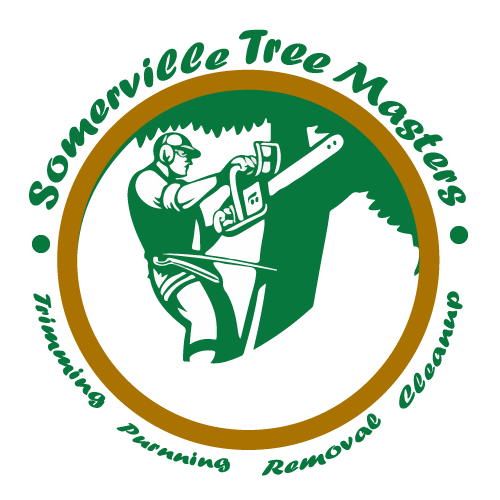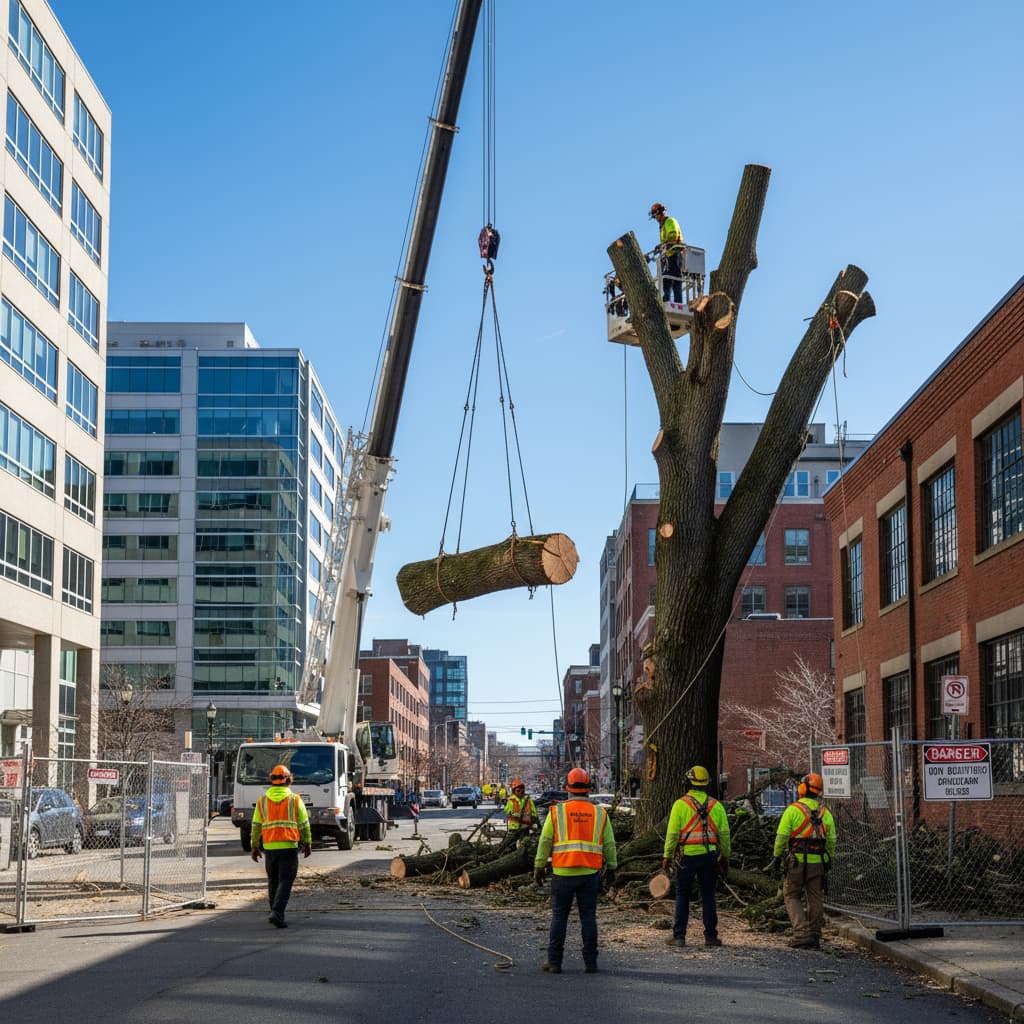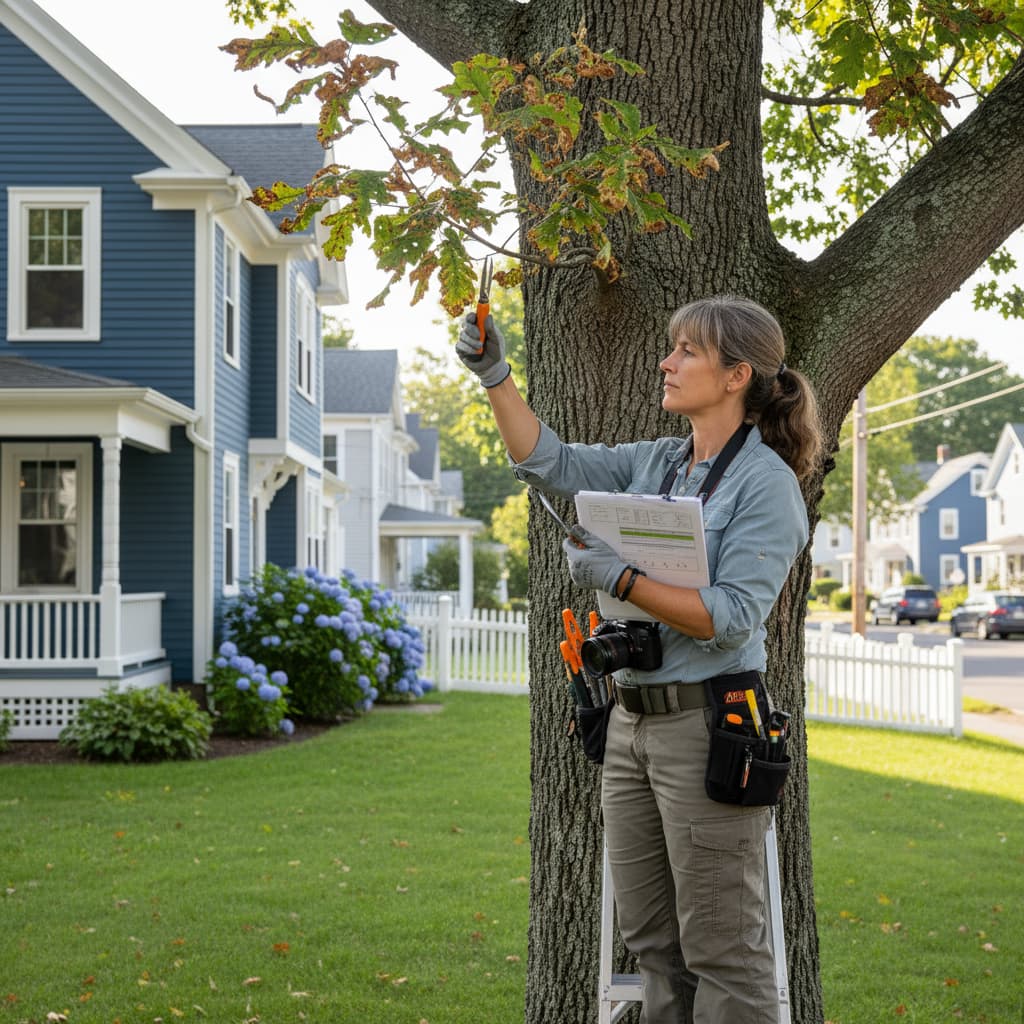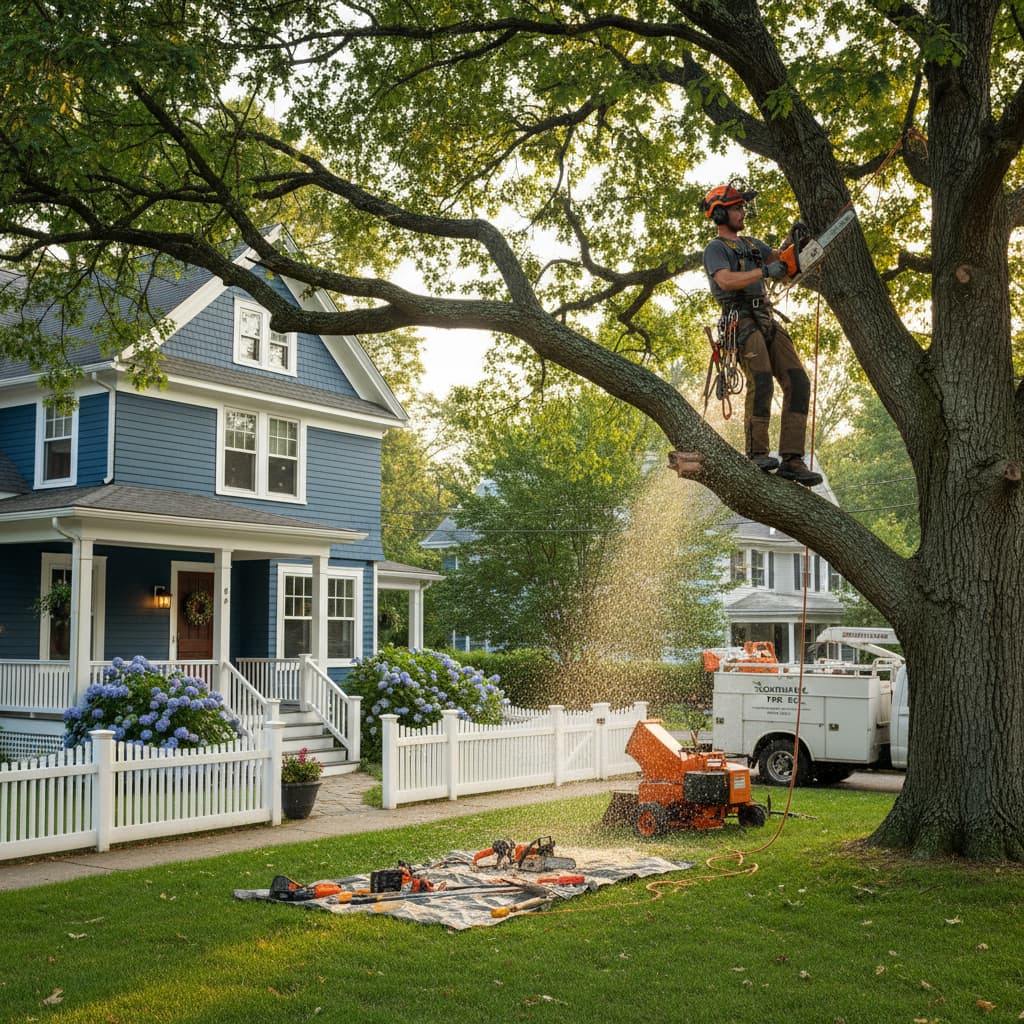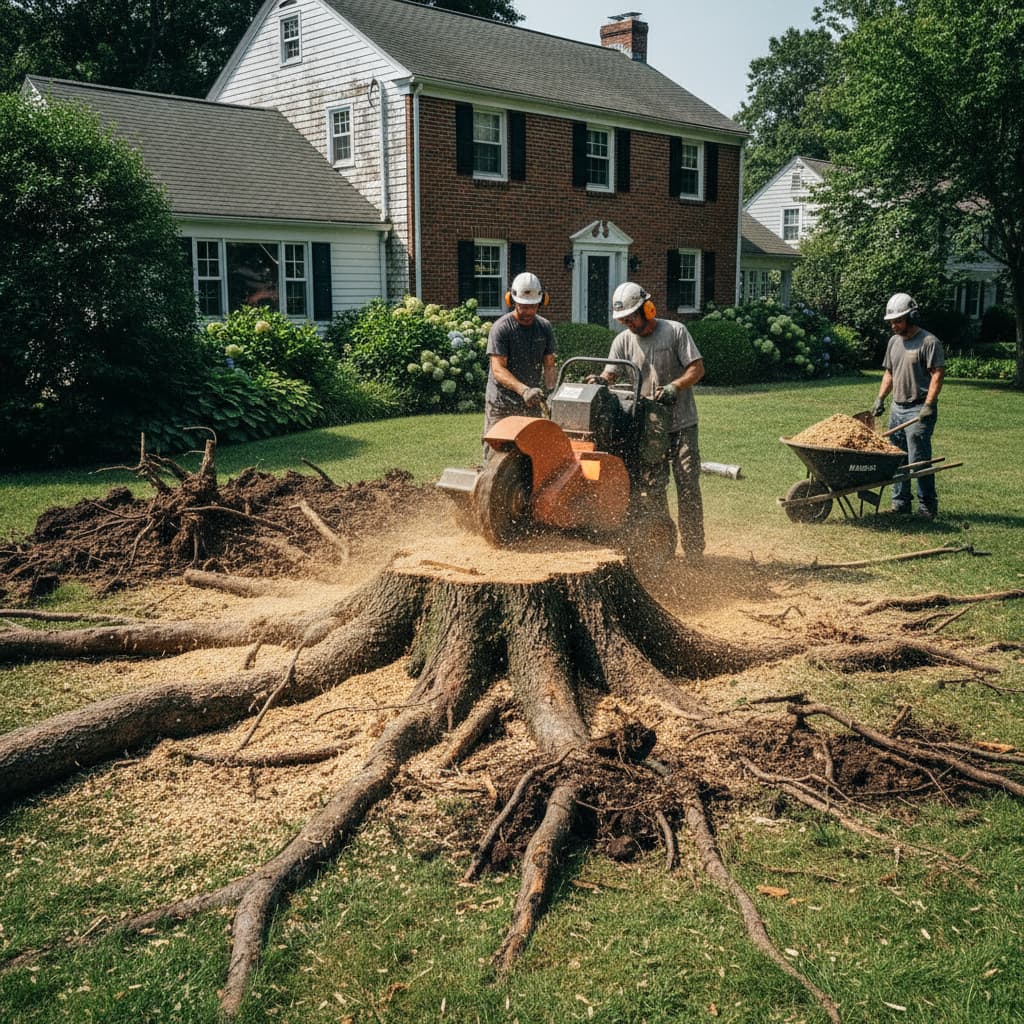Safe Tree Removal After Storm Damage
Tree Removal Somerville
Storm-damaged trees create immediate safety hazards that require careful assessment and professional intervention to protect property and lives. When homeowners need tree removal following severe weather, the risks multiply significantly due to unstable trees, damaged power lines, and compromised structural integrity. Somerville Tree Masters specializes in emergency storm response, providing safe and efficient removal of dangerous trees while protecting surrounding property from further damage.
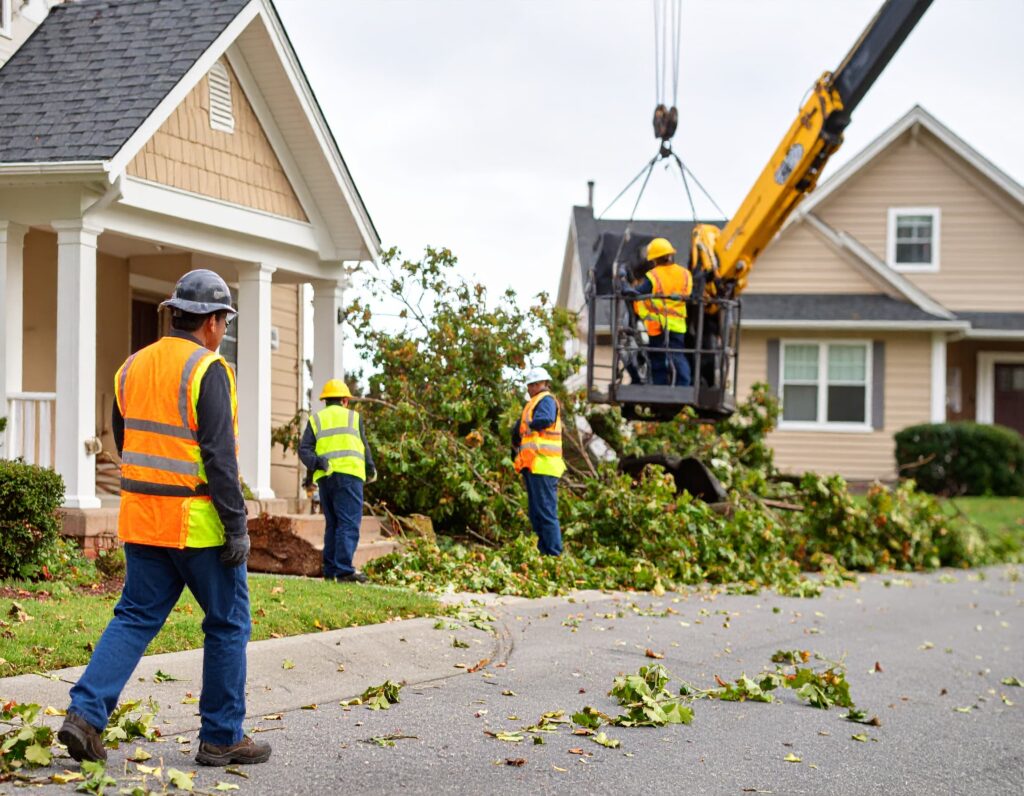
Immediate Safety Assessment After Storms
The first priority following storm damage involves a comprehensive safety assessment before attempting any tree removal activities. Damaged trees may appear stable while harboring hidden structural defects that make them unpredictable and extremely dangerous. Professional assessment identifies these hazards and determines appropriate response strategies.
Homeowners should establish safe perimeters around damaged trees and avoid the area until a professional evaluation occurs. Storm-stressed trees can fail without warning, dropping large branches or toppling completely onto people, vehicles, or structures nearby.
Power Line Hazards and Electrical Dangers
Downed power lines represent the most serious immediate threat following storm tree damage. Trees in contact with electrical wires can conduct deadly current through their entire structure, creating electrocution risks even when not directly touching the wires themselves.
Any tree removal involving contact with power lines requires immediate utility company notification and professional line clearance workers. Massachusetts law prohibits anyone except certified line clearance specialists from working within ten feet of primary power lines.
Professional Storm Response Protocols
Professional tree removal services follow systematic protocols when responding to storm damage emergencies. Initial triage prioritizes trees that have fallen on homes, are blocking critical access routes, or pose immediate threats to public safety.
Emergency response teams assess each situation individually, considering factors like tree size, damage extent, proximity to structures, and potential for further failure. This systematic approach ensures the most dangerous situations receive immediate attention while managing resources effectively.
Equipment and Expertise Requirements
Storm-damaged tree removal often requires specialized equipment beyond standard tree service tools. Cranes, winches, and rigging systems become necessary when dealing with partially failed trees that cannot be safely climbed or when working around damaged structures.
Professional operators possess the training and experience necessary to safely operate complex equipment while managing the unpredictable behavior of storm-damaged trees. This expertise proves critical when dealing with trees under tension or those with compromised structural integrity.
Common Storm Damage Scenarios
Uprooted trees create complex removal challenges due to exposed root systems and unstable soil conditions. These situations require careful assessment of soil stability and potential for further tree movement during removal operations.
Partially failed trees with broken trunks or major limbs present particularly dangerous scenarios. These trees often remain under significant tension that can cause sudden, violent movement when cutting begins, requiring specialized techniques and extreme caution during removal.
Hanging Branches and Widow Makers
Storm damage frequently creates hanging branches trapped in tree crowns, commonly called “widow makers” due to their tendency to fall unexpectedly. These hazards require immediate attention but demand careful removal techniques to prevent injury to workers and property damage.
Professional tree removal services use specialized techniques and equipment to safely remove hanging branches without endangering personnel or creating additional hazards. DIY attempts to remove these dangerous branches often result in serious injuries.
Why Professional Services Are Essential
Storm-damaged tree removal involves hazards that far exceed normal tree work complexity. Compromised trees behave unpredictably, making them dangerous for anyone without specialized training and experience in emergency tree situations.
Professional services carry appropriate insurance coverage and possess the equipment necessary to handle dangerous storm damage scenarios safely. This protection proves essential when dealing with high-risk situations that could result in significant property damage or personal injury.
Legal and Insurance Considerations
Homeowner insurance policies typically cover storm damage and tree removal when trees fall on covered structures, but coverage varies significantly between policies. Professional services understand insurance requirements and can provide proper documentation for claims.
Attempting DIY storm tree removal may void insurance coverage if injuries or additional property damage occur. Professional services maintain proper licensing and insurance coverage that protects homeowners from liability during dangerous removal operations.
Emergency Response Timing
Quick response to storm-damaged trees prevents additional hazards from developing while conditions remain manageable. Delayed action allows damaged trees to deteriorate further, potentially creating more complex and expensive removal scenarios.
Professional tree removal services maintain emergency response capabilities that enable rapid deployment when storm damage occurs. This quick response capability proves essential during widespread storm events when demand for services peaks.
Prioritizing Multiple Damage Sites
When storms cause extensive damage across properties, professional services help prioritize removal based on immediate safety risks and practical considerations. Trees threatening structures or blocking emergency access receive priority attention over less critical situations.
This systematic approach ensures efficient resource allocation while addressing the most dangerous situations first. Professional assessment helps homeowners understand which trees require immediate attention versus those that can wait for scheduled removal.
Documentation and Evidence Collection
Proper documentation of storm damage proves essential for insurance claims and municipal reporting requirements. Professional services understand documentation requirements and can provide photographs, reports, and expert testimony when needed.
Before removal begins, comprehensive documentation captures the extent of damage and its relationship to covered structures or property. This evidence becomes crucial for insurance adjusters who may not see the damage until after emergency removal occurs.
Working with Insurance Adjusters
Professional tree removal services often coordinate directly with insurance adjusters to ensure proper coverage and documentation. This coordination streamlines the claims process while ensuring homeowners receive appropriate coverage for necessary tree removal work.
Understanding insurance policy language and requirements helps professional services provide the documentation and evidence necessary to support valid claims. This expertise proves valuable during stressful post-storm recovery periods.
Cleanup and Site Restoration
Storm tree removal generates significant debris requiring proper disposal and site cleanup. Professional services include debris removal and basic site restoration as part of their emergency response offerings.
Proper cleanup prevents secondary hazards from debris piles while preparing sites for repairs or reconstruction. Professional services understand municipal disposal requirements and can ensure appropriate debris management.
Preventing Secondary Damage
Improper debris management can create additional problems, including drainage issues, pest habitat, and fire hazards. Professional cleanup services prevent these secondary problems while facilitating property recovery efforts.
Strategic debris placement and removal protect undamaged landscaping and structures from unnecessary damage during cleanup operations. This attention to detail preserves property value while addressing emergency tree removal needs.
Preventive Measures for Future Storms
Post-storm assessment often reveals trees with conditions that made them vulnerable to failure. Professional services can identify similar conditions in remaining trees and recommend preventive care to reduce future storm damage risks.
Regular tree maintenance, including pruning, health care, and removal of declining trees, reduces storm damage potential significantly. Professional assessment helps property owners develop maintenance strategies that improve storm resilience.
Species Selection and Placement
When replacing storm-damaged trees, species selection and proper placement can reduce future storm risks substantially. Professional services understand which species perform better during severe weather and in appropriate planting locations.
Strategic tree placement away from structures and power lines reduces potential damage during future storms while still providing desired benefits. Professional guidance ensures replacement plantings enhance rather than increase future storm risks.
Emergency Contact Procedures
Establishing emergency contact procedures before storms occur ensures a rapid response when damage happens. Having contact information for qualified tree removal services readily available prevents delays during critical situations.
Professional services often provide emergency contact information and may offer priority response for existing customers. These relationships prove valuable during widespread storm events when demand for services exceeds availability.
Coordination with Utility Companies
Storm damage often involves coordination with utility companies to address power line concerns before tree removal can begin safely. Professional services understand these coordination requirements and can facilitate necessary approvals.
Proper utility coordination prevents delays while ensuring safety during removal operations. Professional services maintain relationships with local utilities that enable efficient coordination during emergencies.
Long-term Recovery Planning
Storm tree removal represents just the first step in comprehensive property recovery planning. Professional services can guide site restoration, replacement plantings, and preventive measures for future storm preparedness.
Comprehensive recovery planning considers factors like soil conditions, drainage impacts, and landscape integration when developing restoration strategies. Professional expertise helps ensure storm recovery enhances rather than merely replaces pre-storm conditions.
Safe storm tree removal requires professional expertise, specialized equipment, and comprehensive safety protocols that exceed typical homeowner capabilities. When searching for tree removal near me after storm damage, choosing qualified professionals protects both immediate safety and long-term property interests while ensuring an appropriate response to dangerous conditions.
